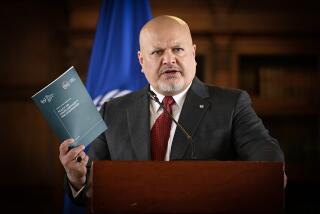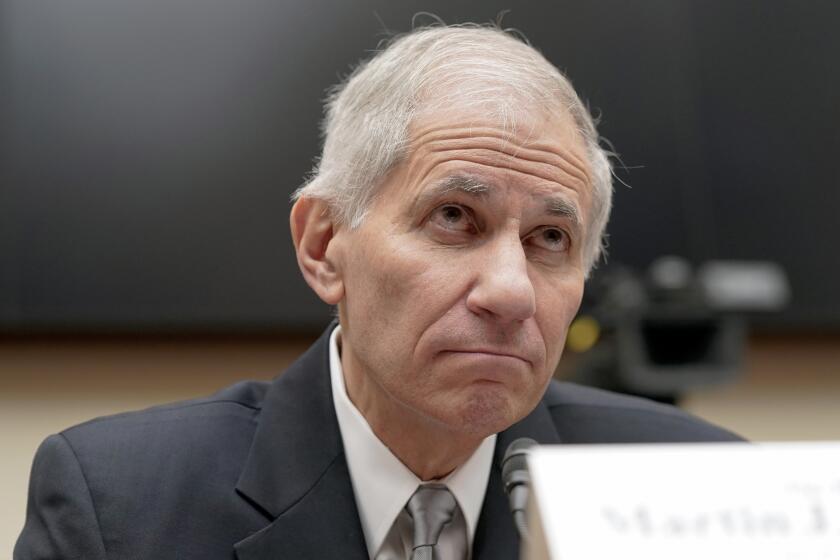Impartial Panel for Smoking Study Proves Hard to Find : Health: Officials learn that scientists qualified to review tobacco research often have some link to the industry or anti-smoking groups.
Can a scientist who is trying to land a $1.2-million grant from Philip Morris be counted on to objectively assess the risks of passive smoking?
If the answer is no, consider that the same scientist serves as an adviser to the American Lung Assn.
That may sound like a pop quiz for law students, but such questions formed a real life puzzle for Environmental Protection Agency officials in search of outside scientists to evaluate an agency draft report on the risk of passive smoking.
Many of the scientists qualified to participate in the review had some link to the tobacco industry or to anti-smoking organizations. And with members of Congress and lobbyists weighing in, the search raised questions of whether it was possible to impanel totally unentangled experts to review such a politically charged issue.
When the 16-member group was assembled late last month, it contained so many scientists who were perceived to have a conflict or bias that virtually no one was satisfied.
“On most issues, there’s a bell-shaped curve of informed opinion,” said Donald Barnes, staff director of the EPA’s Science Advisory Board. “We try to take informed scientists out of the center of that distribution so you don’t find people rigidly for or against. In an issue as highly visible as smoking, however, there might not be this bell-shaped distribution with lots of folks in the center.”
The controversy began last summer when the advisory board was asked to review a draft study by EPA researchers that concluded that as many as 3,800 Americans die of lung cancer every year from involuntary exposure to tobacco smoke.
If the draft report withstands criticism of the advisory board, which meets next month, the government would rank passive smoking as the third largest cause of lung cancer deaths--after direct smoking and radon--and possibly comply with a recommendation in the study that environmental tobacco smoke be ranked among a handful of substances as a known human carcinogen.
Although the EPA has no authority to regulate tobacco smoke, it plans to use the findings as the basis for a guide to workplace smoking restrictions geared to decision-makers in government and private industry.
With so much at stake, Barnes and assistant Robert Flaak decided to expand the advisory board’s seven-member committee on indoor air pollution, bringing in another nine consultants to help review the study. But in assembling the panel, they discovered that competence was easier to assure than independence--even among the regular committee members.
For example, James E. Woods Jr., a professor of building construction at Virginia Polytechnic Institute, has asked Philip Morris to fund a $1.2-million project to study methods of improving indoor ventilation. The project would employ six scientists, three graduate students and four staffers.
A mechanical engineer known for his work with “sick buildings,” Woods pointed out that he began negotiating with the tobacco company long before the panel was asked to review the passive smoking study. Conceding the importance of the grant to his university, he nonetheless insisted that it would not compromise his decision-making. “I’m not going to allow it to influence me,” he said.
Moreover, Woods noted, any link to the tobacco industry is balanced by his membership on the technical advisory group of the American Lung Assn., which is anti-smoking.
Of the 16 reviewers, six scientists have some connection to the Center for Indoor Air Research, which was established and funded almost entirely by three tobacco companies--Philip Morris USA, R. J. Reynolds Tobacco Co. and Lorillard Corp. Based in Linthicum, Md., the center distributes $4 million to $5 million per year to finance research projects on indoor air pollution, including environmental tobacco smoke, according to director Max Eisenberg.
Morton Lippmann, chairman of EPA’s indoor air-quality committee, serves on the center’s advisory board, where he helps to chart its research objectives and decide which projects should be funded. Advisers earn an honorarium of $800 per day during the center’s two-day meetings held once or twice annually, said Eisenberg.
Lippmann said his advisory role for the center causes no more bias on smoking than his far more active consulting work for the government, including the EPA, which is hoping for a favorable review from the panel.
“It’s not that I’m a tool of industry,” said Lippmann, professor of environmental medicine at New York University Medical Center. “I’m a bigger tool of government. I’ve been working for the EPA longer. I have more to lose by offending the EPA than industry.”
More to Read
Start your day right
Sign up for Essential California for news, features and recommendations from the L.A. Times and beyond in your inbox six days a week.
You may occasionally receive promotional content from the Los Angeles Times.






